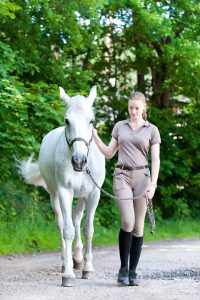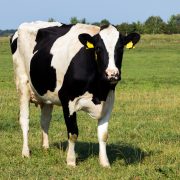Expert visual assessment strategies for equine lameness examinations in a straight line and circle: A mixed methods study using eye tracking
Expert visual assessment strategies for equine lameness examinations in a straight line and circle: A mixed methods study using eye tracking

our summary:
Starke, S.D. and May, S.A. (2022) Expert visual assessment strategies for equine lameness examinations in a straight line and circle: A mixed methods study using eye tracking. Veterinary Record, p. e1684.
The aim of this study was to create a knowledge base of expert approaches to equine lameness assessment in order to provide a quantitative starting point that can inform future evidence-based approaches to clinical lameness assessment and education.
Twenty-four expert lameness assessors from ten UK institutions were recruited to form the expert group. These experts viewed 28 video clips of sound and lame horses, 14 videos showed horses at trot in a straight line (rear and front view) and 14 in a circle (side view, left and right rein). Eye tracking data were collected at 60 Hz, whilst assessors were assessing the horses for lameness. Post-assessment questionnaires were used to gather contextual information.
Results showed that for assessments on the straight line, participants consistently looked mostly at the head and os sacrum/tuber coxae region. On the circle, there was pronounced variation across the participants in the viewing time allocated to the different body regions. Many participants looked at the head first and there was a bias towards an increased amount of time spent on the horse’s front region. The questionnaires showed different descriptions of lameness indicators for the same body region and different approaches to decisions in cases of uncertainty.
Limitations of the study are the small number of participants, issues with the video resolution which meant that the os sacrum and tubera coxarum areas were treated as a single region, and that viewing patterns may have been biased by the presence of lameness across horses.
This study provides some evidence that whilst expert veterinarians have developed a reasonably consistent approach when visually evaluating lameness on the straight line there is less consistency when evaluating horses on the circle. The various lameness indicators on the circle require a stronger evidence base for a more systematic, repeatable approach.
Claiming CPD for reading inFOCUS articles
Reading and reflecting on articles can count towards your CPD, and we have a template to help you with the process.
Image copyright attribute: sapocka
Join the discussion
We encourage discussion on all material highlighted in each edition of inFOCUS. Use the button below to join the conversation on Twitter and include your comment in the feed for this issue.






Leave a Reply
Want to join the discussion?Feel free to contribute!